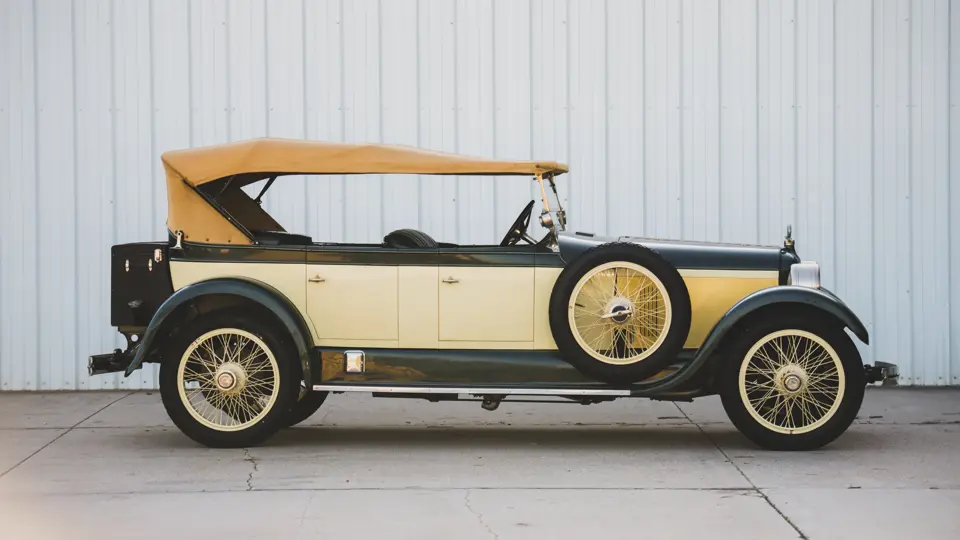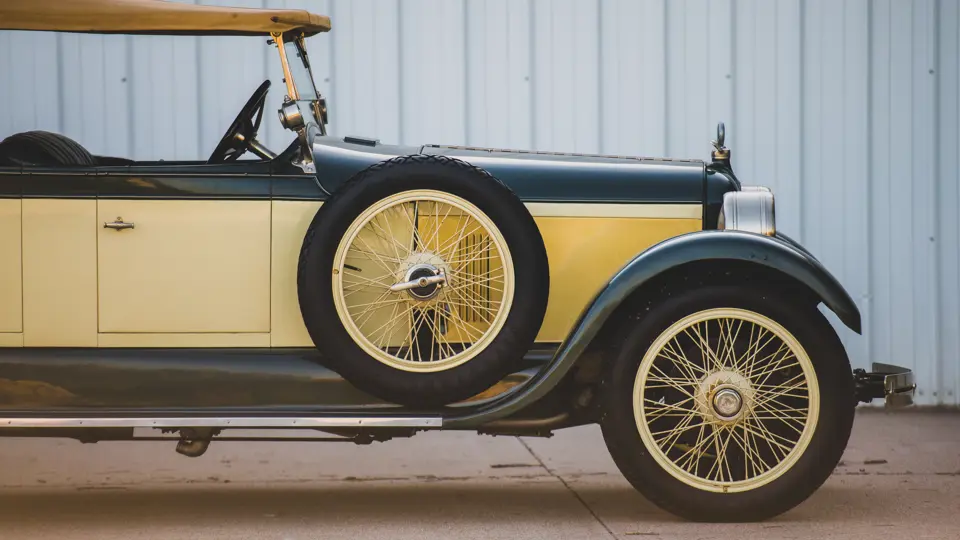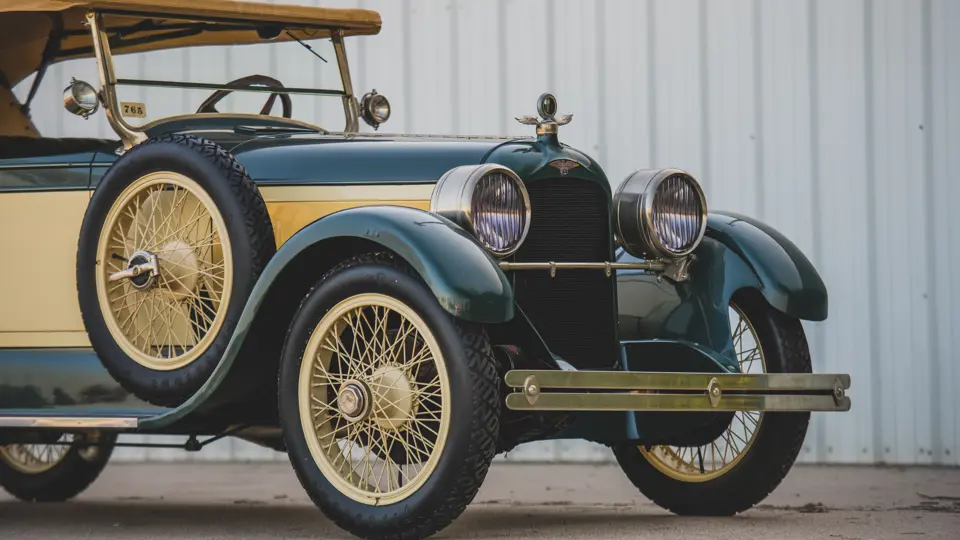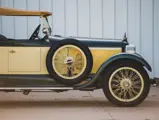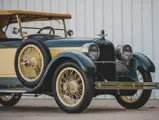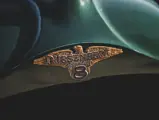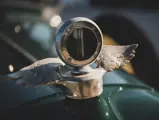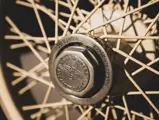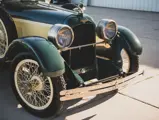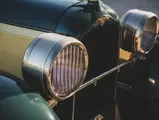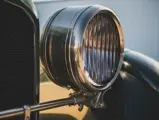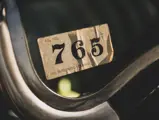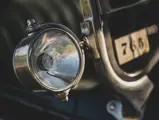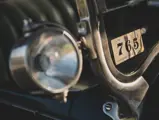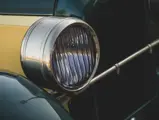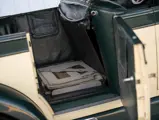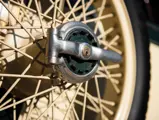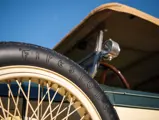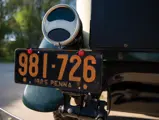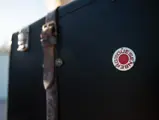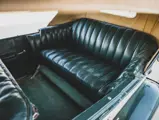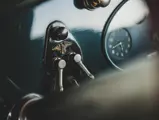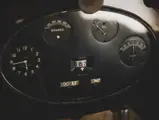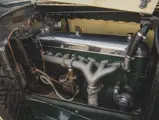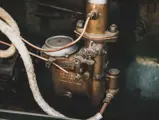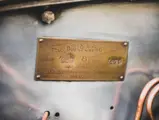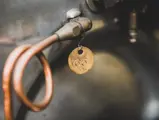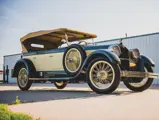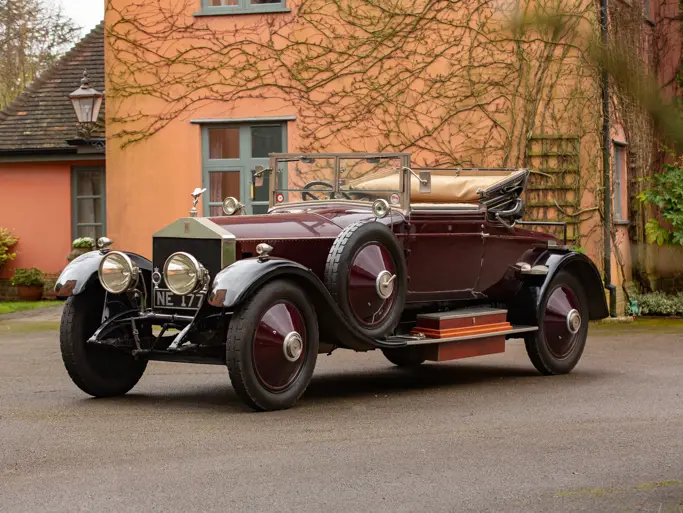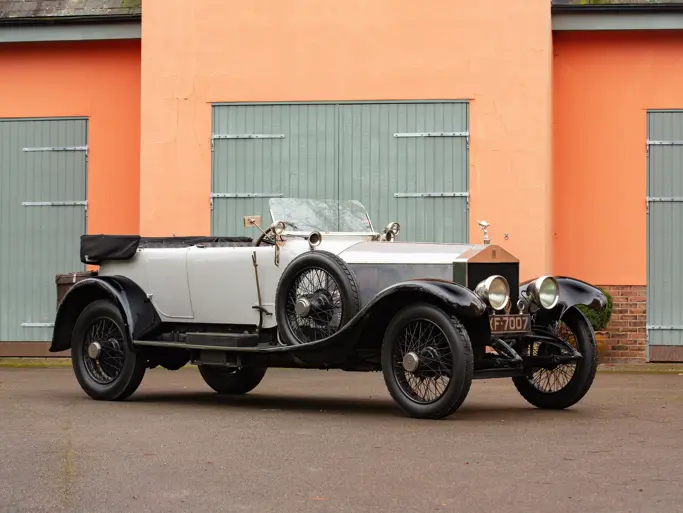
1925 Duesenberg Model A Four-Passenger Sport Phaeton by Millspaugh & Irish
{{lr.item.text}}
$236,500 USD | Sold
The Merrick Auto Museum Collection
{{bidding.lot.reserveStatusFormatted}}
- Race-bred OHC straight eight
- Long recorded history, including original sales record
- Formerly of the Harrah Museum collection
- Long-term display at the Auburn Cord Duesenberg Museum
- Duesenberg perfection
Perennially in the shadow of its younger and bigger brother, the Model J, the Model A Duesenberg was arguably a more significant advance in the industry of its time. Its features, which included a race-bred overhead-cam eight-cylinder engine and four-wheel hydraulic brakes, far outshone other passenger cars of the era.
Frederick Duesenberg was a bicycle racer who worked for Thomas Jeffery, the Wisconsin manufacturer of Rambler bicycles. With his brother August, he opened a garage in Iowa, and around 1905 they designed a two-cylinder automobile, built and marketed as the Mason and named for the local attorney who bankrolled the company. Wishing to concentrate on racing cars, they sold their interests in the Mason Motor Car Company and moved to Minnesota, where they opened an engine business at St. Paul.
Fred’s design for an engine with horizontal valves operated by long vertical rocker arms, the so-called “walking beam” concept, was popular in racing, both for automobiles and boats. After a brief venture building Bugatti-designed aero engines during World War I, the brothers turned their attentions back to racing, their cars winning the French Grand Prix in 1921 and Indianapolis the following year, where eight of the top ten finishers used their engines. By this time they were working on another road car. On 8 March 1920, with Newton Van Zandt and Luther Rankin, they formed the Duesenberg Automobile and Motors Company.
Abandoning the walking beam, the brothers designed an overhead-cam engine, initially of 183 cubic inches, to fit the Indy formula. This was enlarged to 260 cubic inches for the production car, which debuted in November 1920 at New York’s Hotel Commodore. The public and press both loved it, attracted in part by its polished aluminum body, displayed that way because there had been no time to paint it.
Production was slow to start, for the car was still being refined. Once the start-up problems had been solved, however, cash flow became a problem, for the company was undercapitalized. Its salvation would come at the hand of Errett Lobban Cord, who bought the business in 1926. Despite the money troubles, however, Duesenberg managed to build more than 500 Model A cars, slightly better than the record of the more famous Model J. Bodies were supplied by many of the traditional coachbuilders, like Fleetwood and Brunn, although a few sedan and phaeton styles were supplied in quantity by Millspaugh & Irish of Indianapolis.
This Model A Duesenberg sport phaeton was sold by Creamer, a Pennsylvania dealer, to Alfred Fleisher on 19 March 1926. Mr. Fleisher paid cash, a total of $5,250, including $77.40 for freight, $3 for unloading, $5 for gasoline and oil, and $11 for insurance. It is one of very few cars for which the sales record survives. It was recorded as Buckskin Brown and Brewster Green.
Its history has included time in the famous Harrah’s collection at Reno (for which it still bears the inventory tag number 765), ownership by Cord family members, and about 15 years on display at the Auburn Cord Duesenberg Museum. The Merrick Auto Museum purchased it in 2001. Having received a full and accurate restoration, its current colors evoke the original hues. It has dark green folded leather upholstery with matching door and side panels. The phaeton top is medium tan. The engine compartment is clean and correctly appointed.
The condition and preserved history of this Duesenberg render it truly unique.




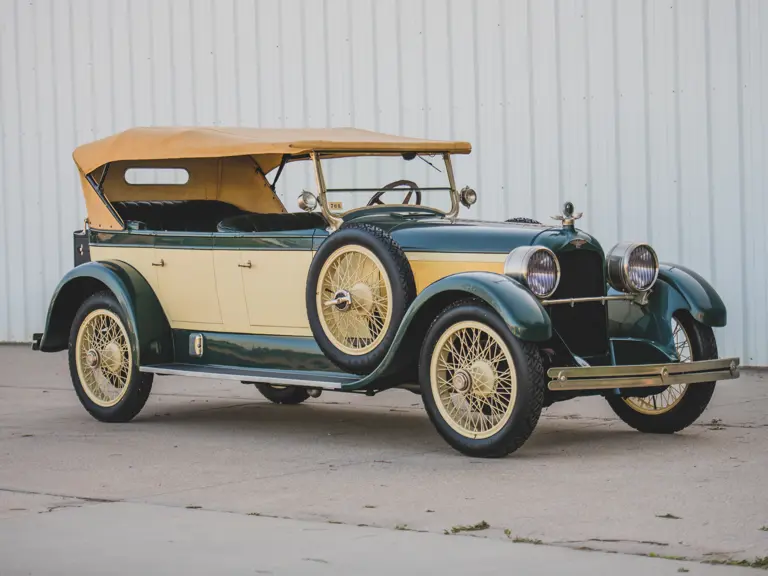

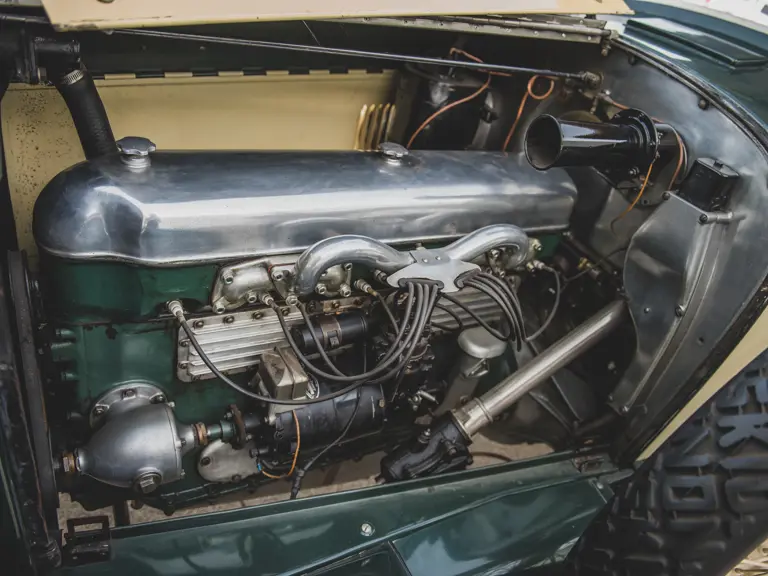
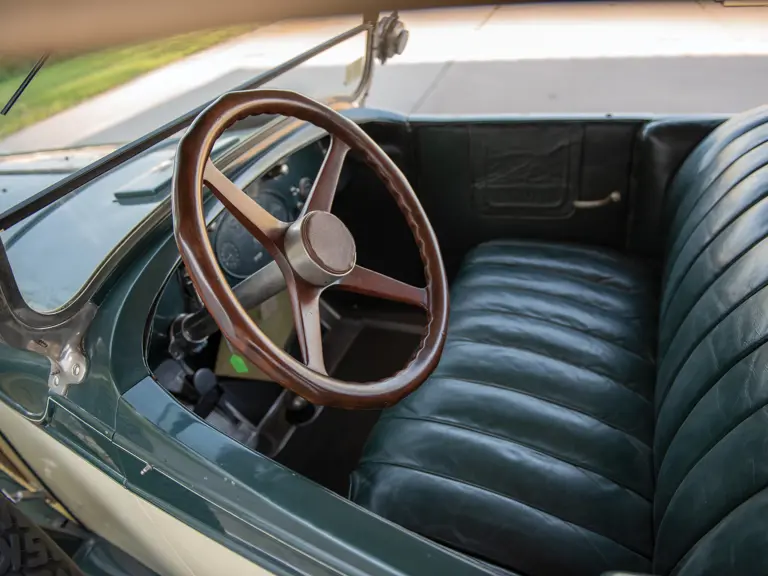


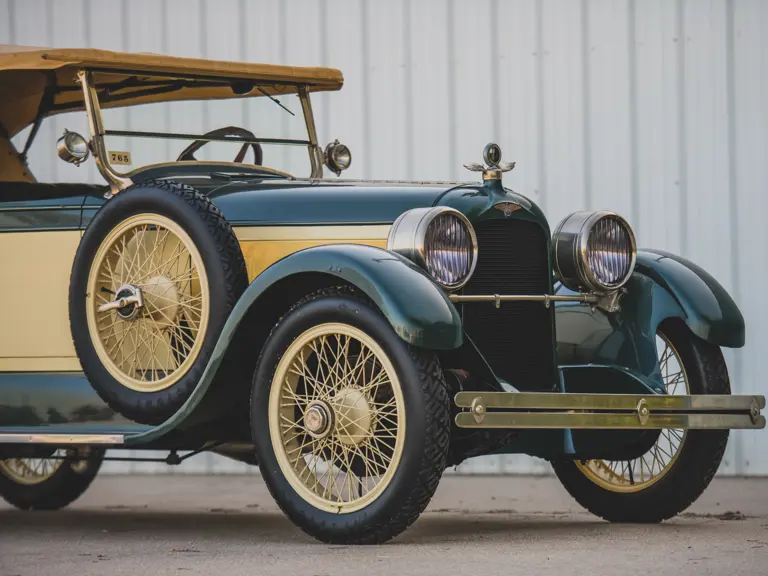
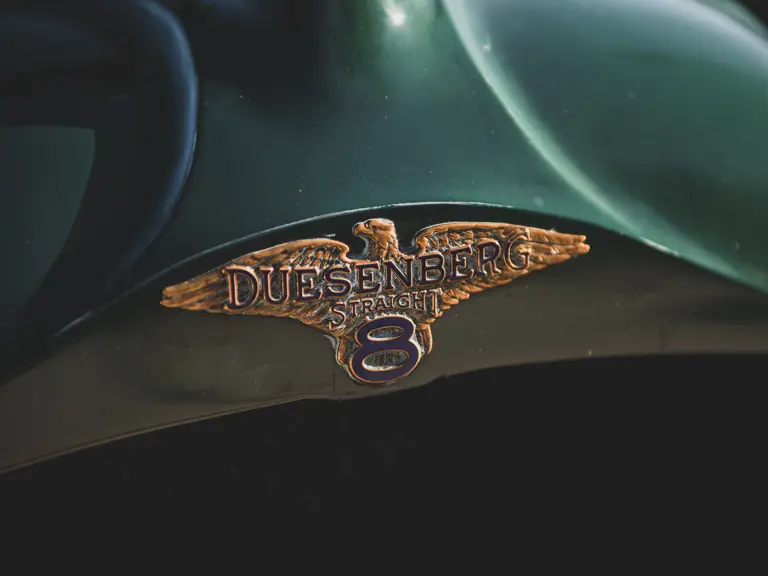
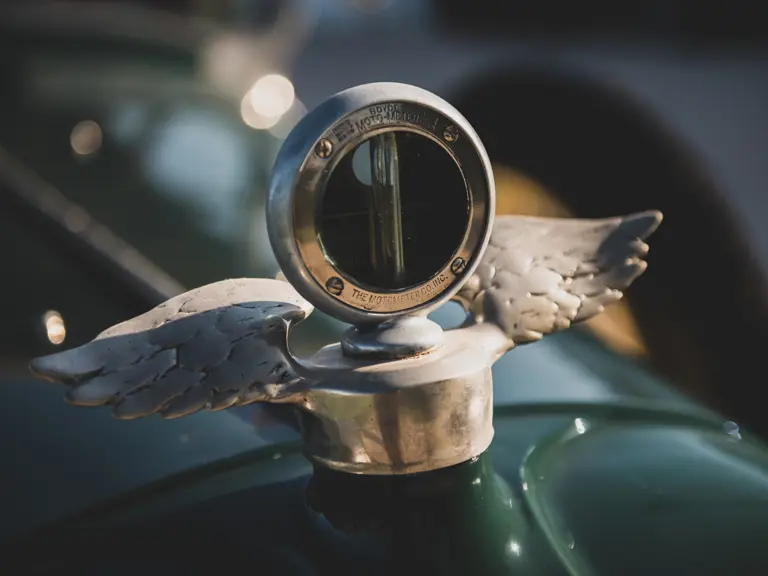
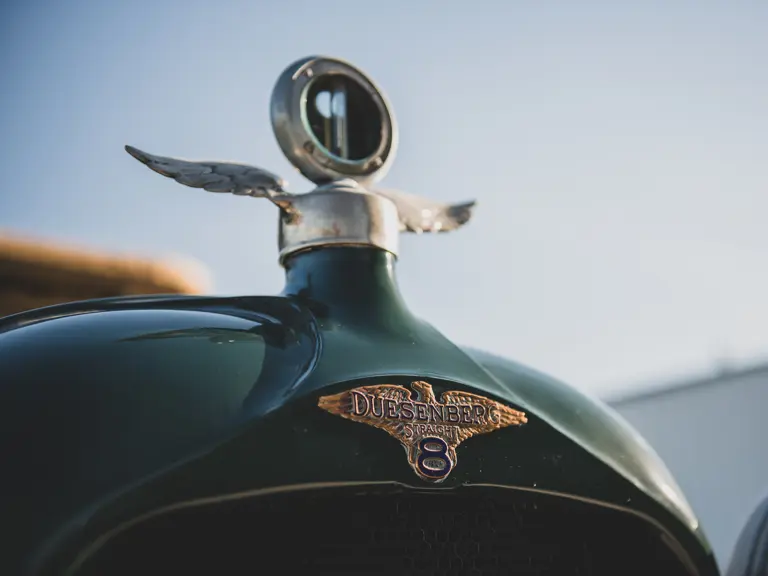

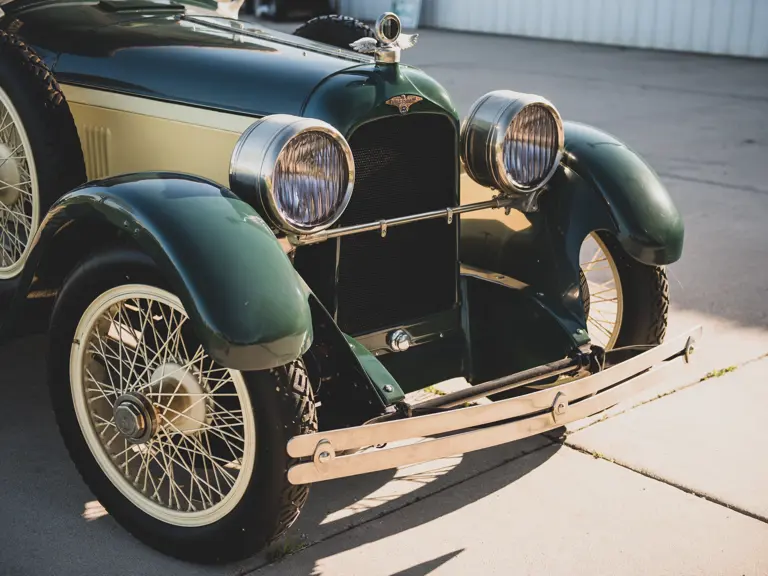


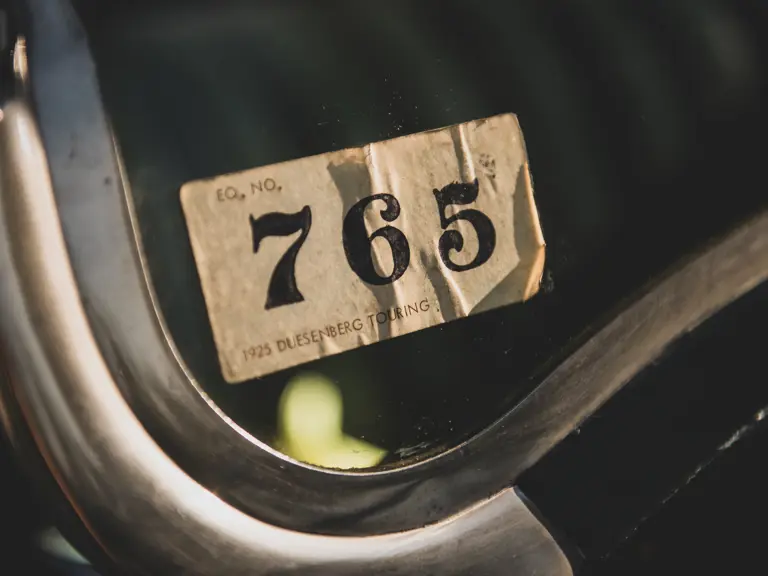

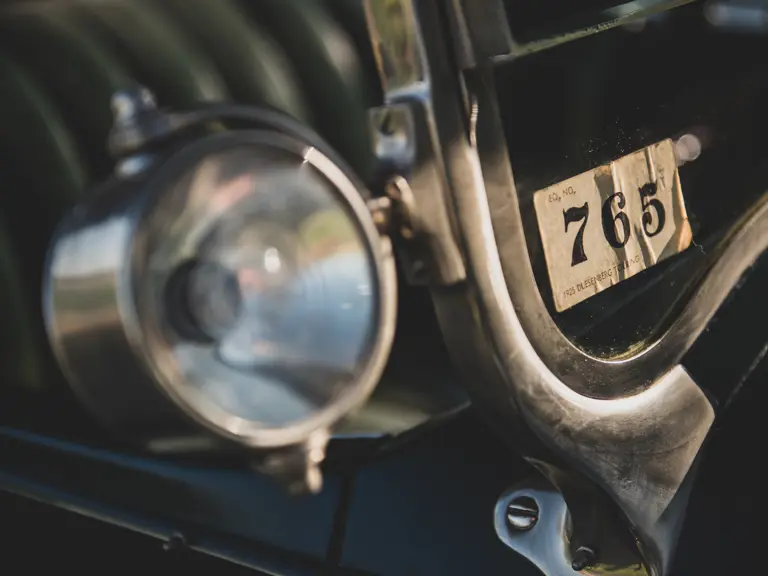
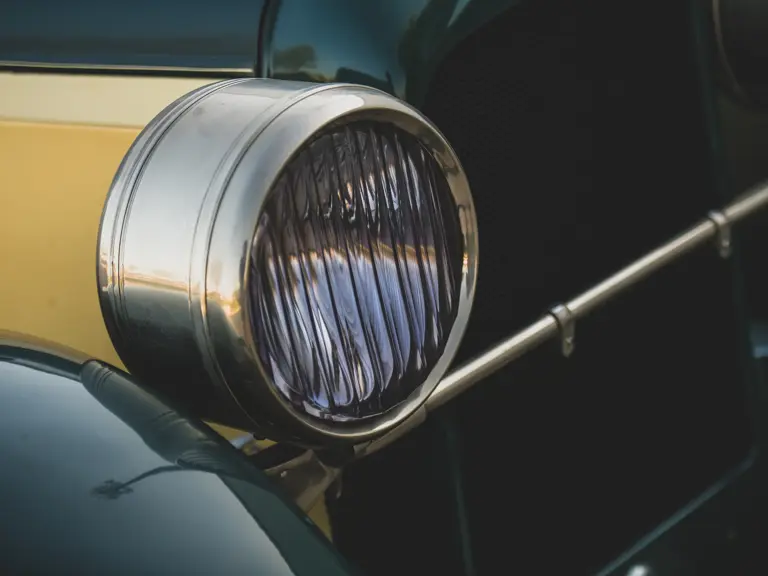

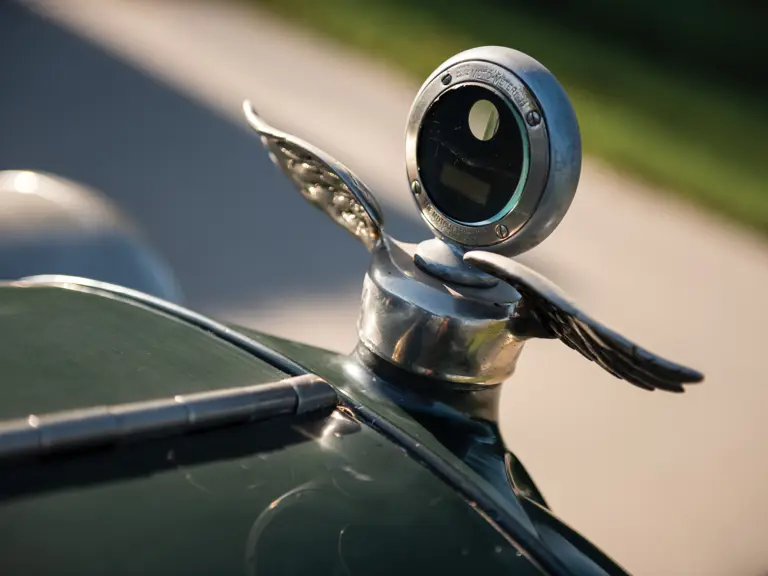
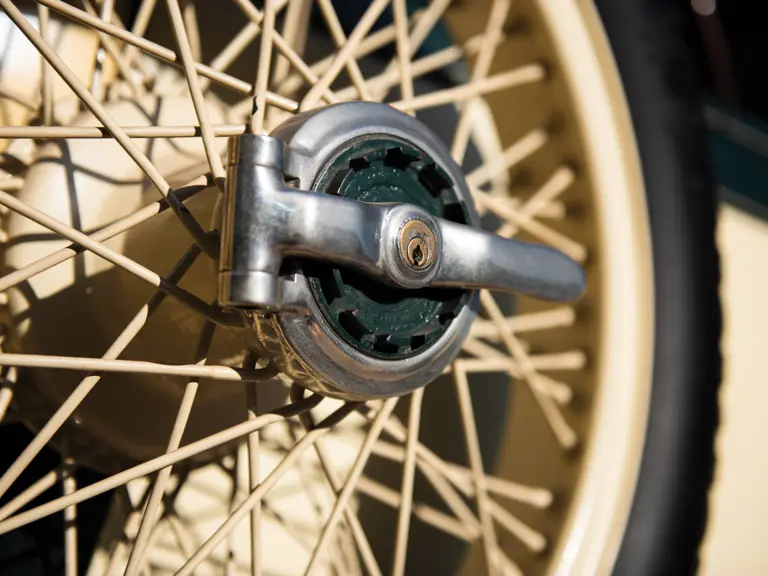

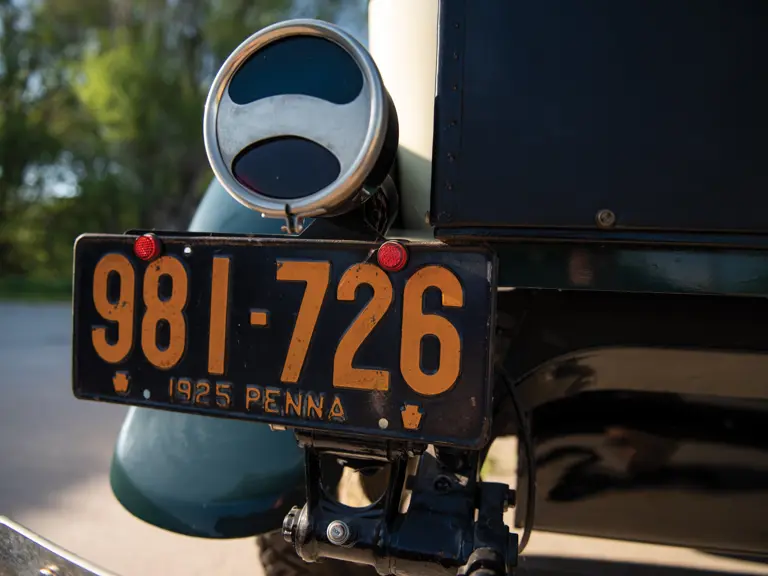
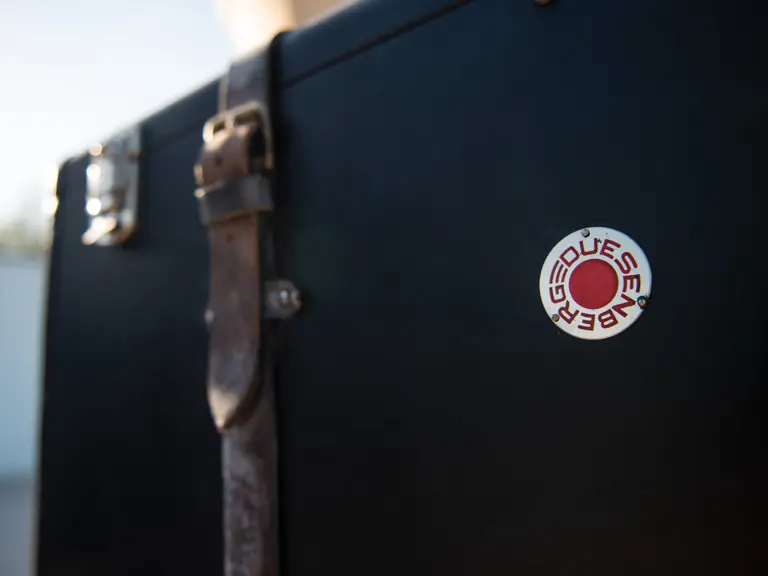
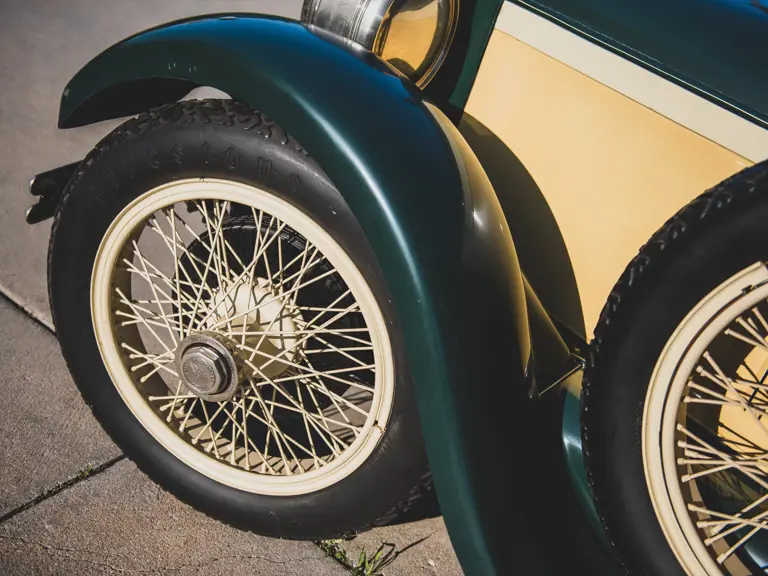
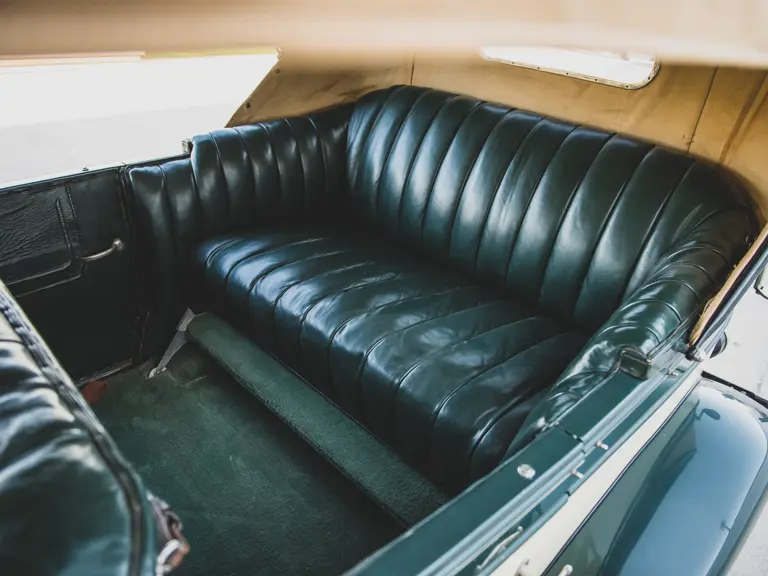
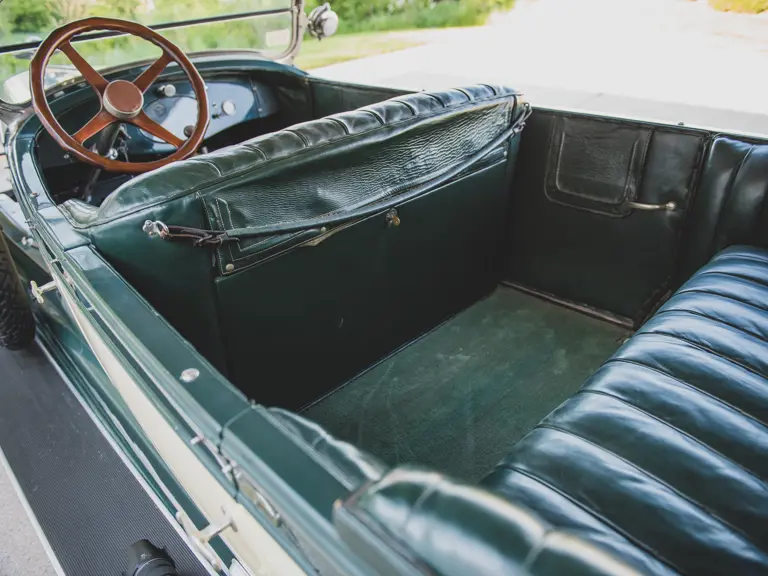
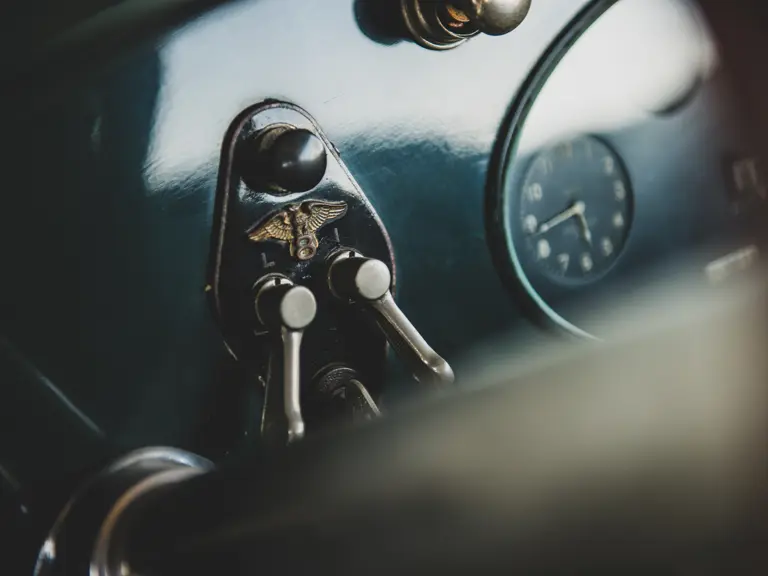
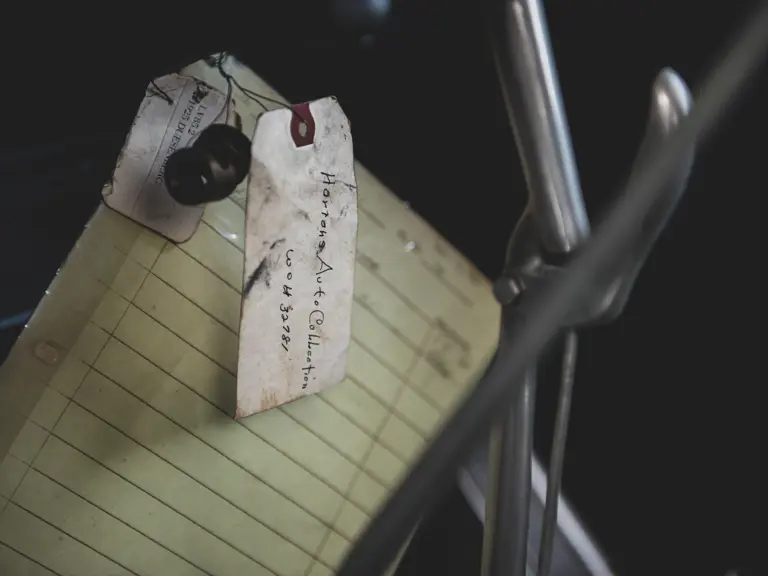
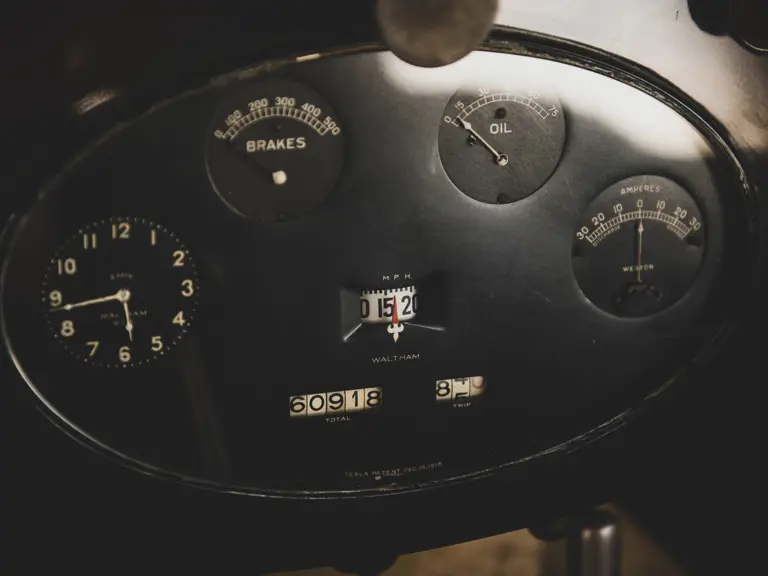
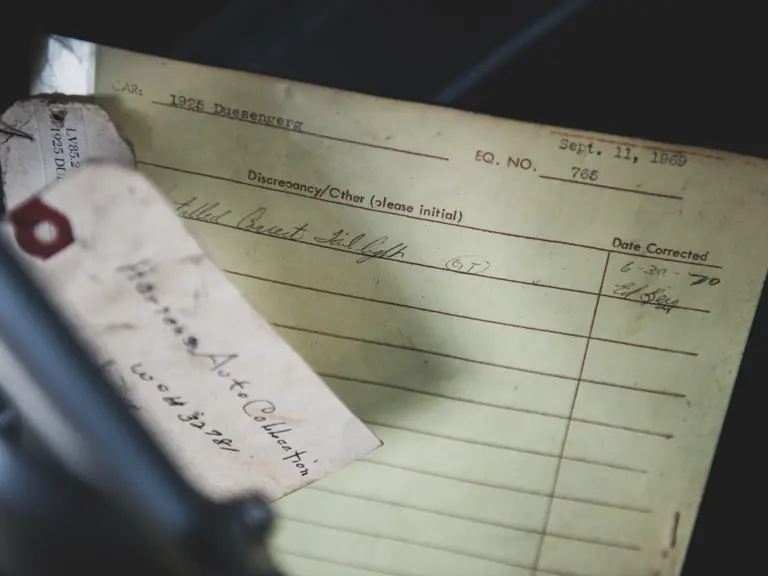


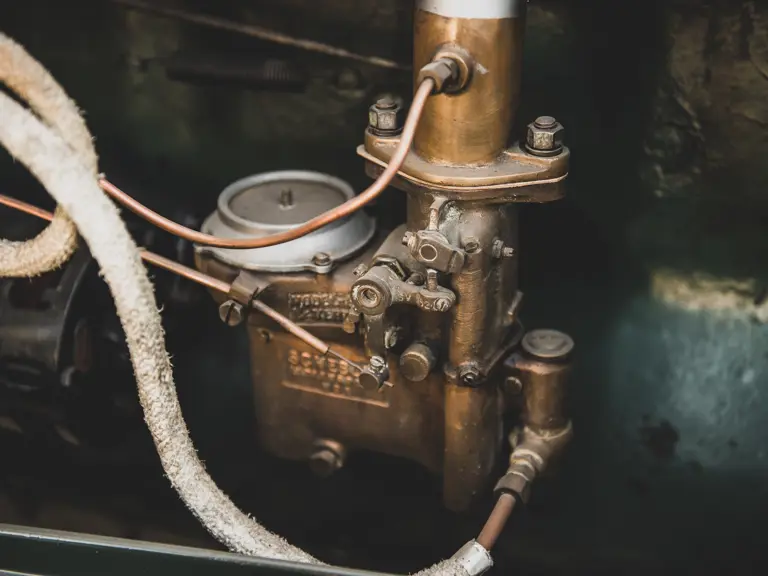
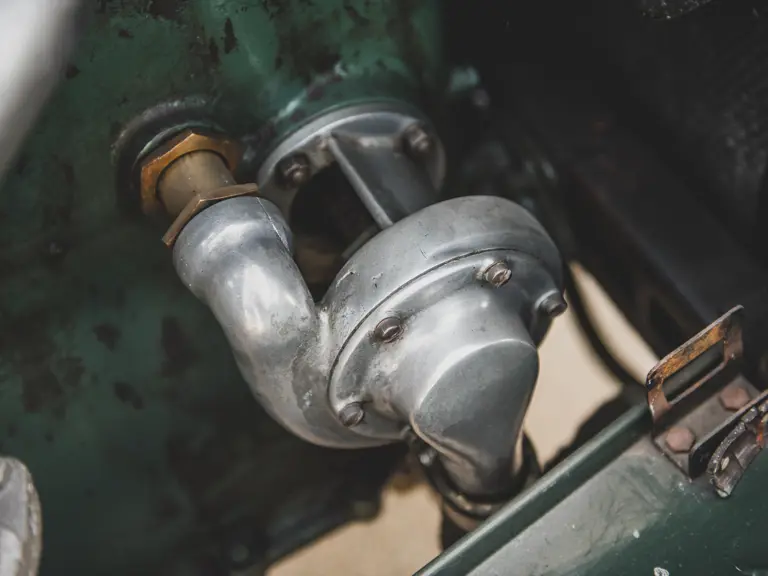
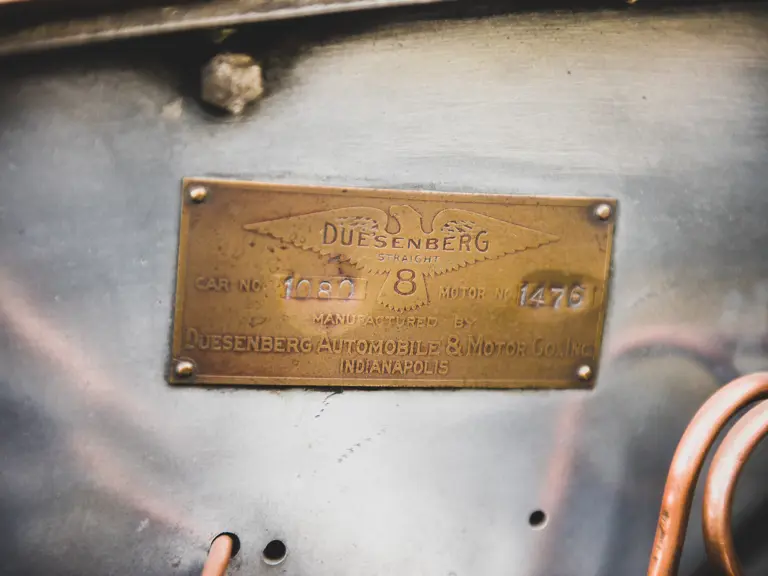
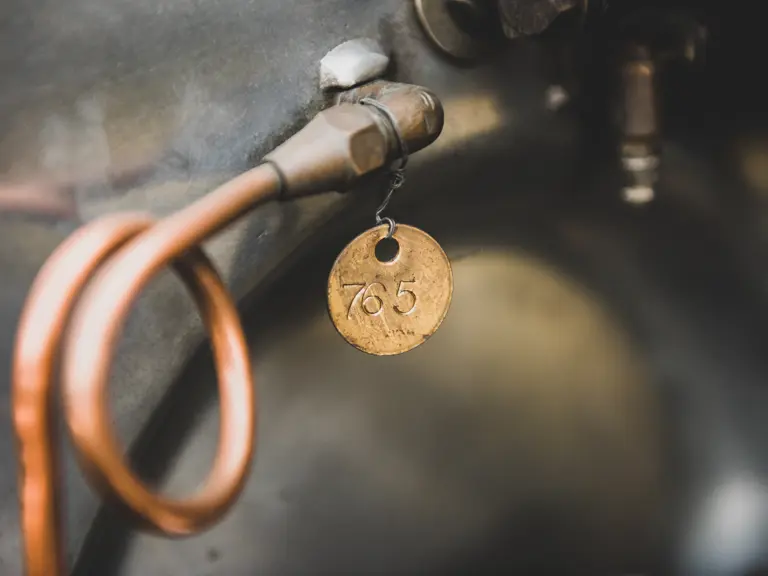
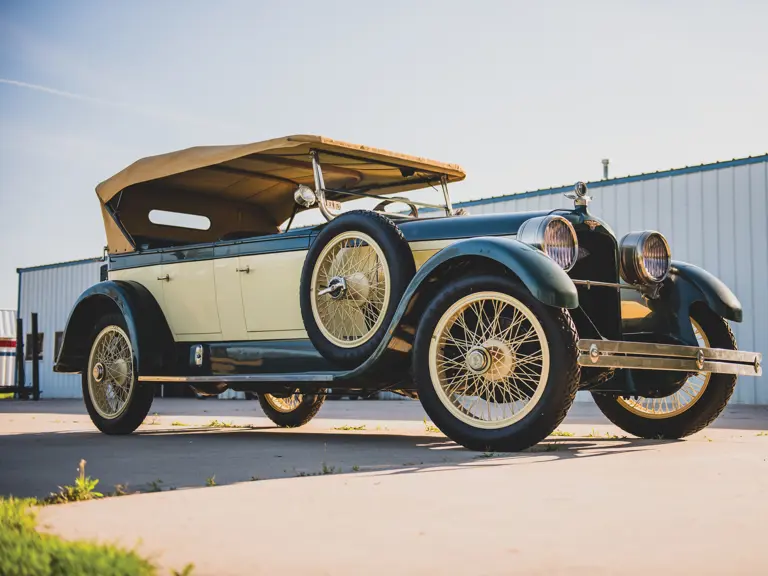
 | Hershey, Pennsylvania
| Hershey, Pennsylvania
